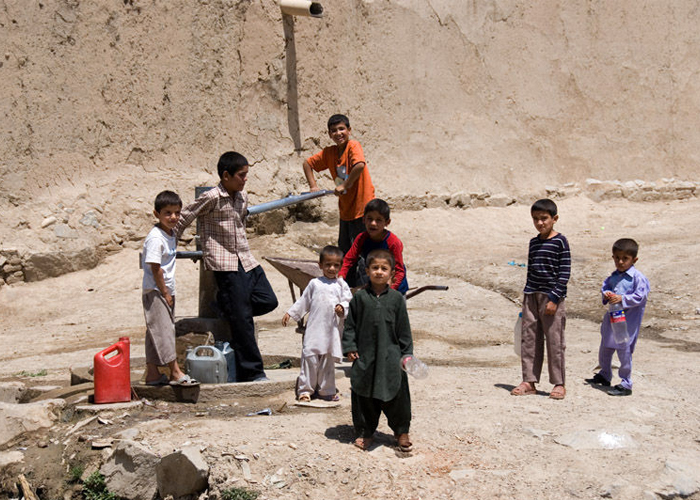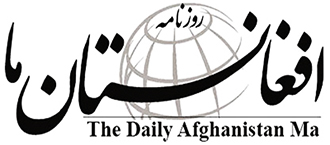The alarms and concerns over the water shortage crisis are repeatedly expressed or raised in Afghanistan, especially in Kabul city. Last week, the office of the first vice president warned of a dramatic drop in groundwater of Kabul city.
Earlier, the president had also expressed his concerns over upcoming drought and water issues in the country. These concerns come when nearly three weeks ago, the Afghan Meteorological Agency had released its technical reports predicting a 30 percent of rainfall reduction in the first three months of 2021. These concerns and predictions also show the seriousness of the problems and also show that the new government has realized the seriousness of the situation about the water shortage crisis which largely linked to our overdependence on rainfall and poor water management in the country, especially Kabul city.
That’s why, the office of the first vice president said that the unprofessional use of Kabul’s groundwater has faced Kabul and the Kabul environment with a bleak future.
According to experts, the Kabul underground water has not only faced with water shortage problems but also faced water pollution. In some parts of the city, it is estimated that the water level has dropped from 20 to 80 meters. According to some media reports, even half of Kabul’s groundwater is unsanitary and unusable.
For the capital city which is considered as the center of politics and culture of the whole country, it is no worse than to face a crisis of water scarcity and unsanitary waters. Although the Kabul water shortage crisis alarm has been sounding for years, no precautionary measures have been taken by the authorities. Now that the new government has realized the importance of this issue, it is hoped to take serious measures by allocating enough budget and scientific analysis of the problem and its factors.
Undoubtedly, there are different factors behind the probable issue of water shortage crisis such as Improper population growth, improper use of water, reduction of rainfall, lack of green area but water wastage and poor water management with absence of government accountability in urban management and provision of urban services are the main causes of the crisis.
Although it is hard to have control the drought resulted by climate changes, it is possible to increase the green area, improve water management and prevent excessive wastage of water. The fact is that there is no serious supervision over the water wells in Kabul city.
In Kabul city, everyone is allowed to dig personal wells and consume water excessively in personal businesses such as car wash, carpet wash, public bath, swimming pools, persona farms and other personal businesses while others do not access drinking water in the city.
In this situation, the rich people dig deep wells and carelessly wastewater while the lower classes of people have to pay from 50 – 80 Afs per one cubic meter of water.
The depth of drinking water wells reached from 20m to around 200 m and those who are in a good economic condition digs up to 100 - 200 meter personal wells and consume water as much as they wish regardless of what is going on in their neighborhood. As a result, thousands of wells have been sunk in Kabul city while the population is increasing due to unemployment, security issues, and other internal displacement factors.
Although the government has taken some good steps to build water infrastructure or water dam in the vicinity of Kabul, the practical process of this program is too much slow. Some of these projects and dams took more than a decade to be completed or even finally aborted.
The recent contract signed about the construction of Shahtoot Dam between Afghan and Indian officials is aimed to provide drinking water to some two million residents of Kabul, but no one knows how long it would take to be completed. If this project is timely implemented, a great part of the problem would be eliminated from Kabul city.
However, the implementation of large social and economic projects also need to the people’s support, peaceful environment and so the people should contribute in implementation of such projects and should not forget their responsibility in this regard.
The People should also be cautious about water consumption and note that water in Kabul is not just scarce; it is also unsafe, especially for drinking, cooking, and general household use. In recent years a report was in the media showing at least 20 harmful bacteria in the 100 millimeters (mm) they sampled at two locations in western and northern parts of the city.
Therefore, the government needs to create a monitoring mechanism so as to prevent from water pollution and water wastage while the people should also be in coordination with government agencies so as to prevent water wastages in their neighborhood. The government may not be able to supervise everywhere and every house if the people and government do not work in close coordination.In order to fundamentally rescue from the water shortage crisis we need to improve the water management system with serious monitoring method to ensure proper consumption water. In the meanwhile, the water shortage and water pollution is a chronic and serious issue need to billions more dollar projection to stabilize the conditions and prevent from the farther crisis in the future. According to experts, the amount of rain and snowfall in Afghanistan makes 57 billion cubic meters of water annually but due to lack of proper management and investment only between 30 to 35 percent of this water can be used in Afghanistan and the rest ends up in foreign countries. Consequently, the majority of the people do not have access to drinking water let alone for farms and cultivation.
Home » Opinion » Kabul City: On the Brink of Water Shortage Crisis
Kabul City: On the Brink of Water Shortage Crisis
| Mohammad Zahir Akbari

